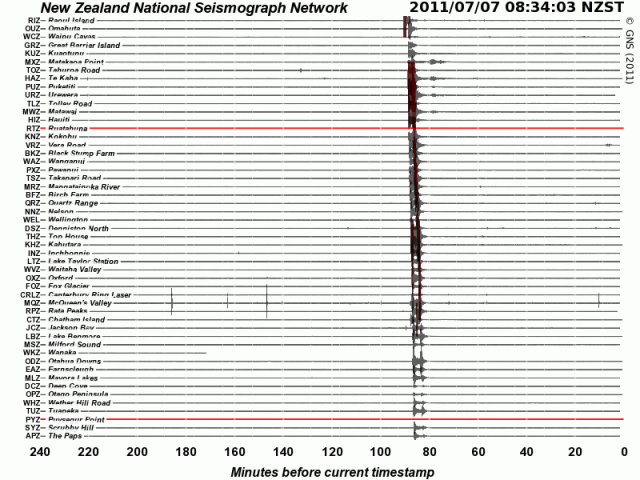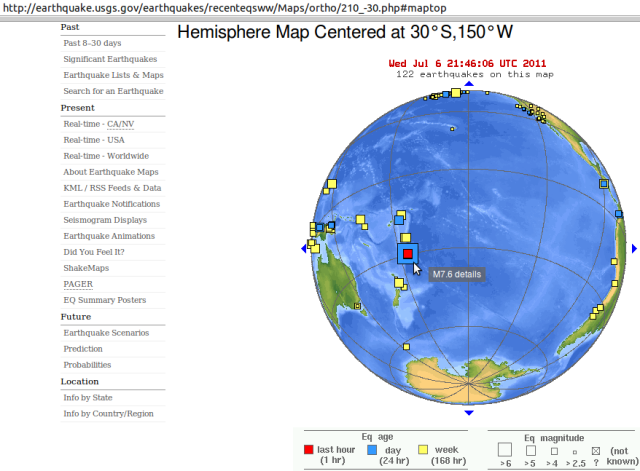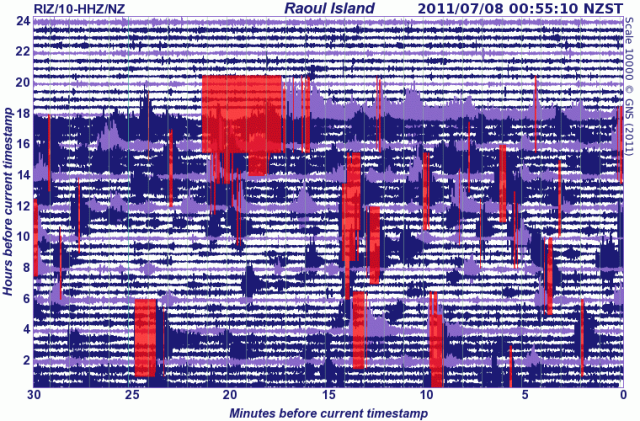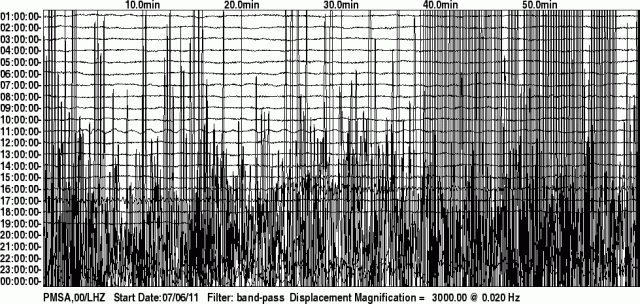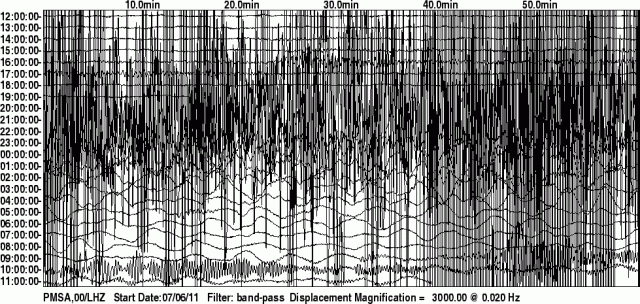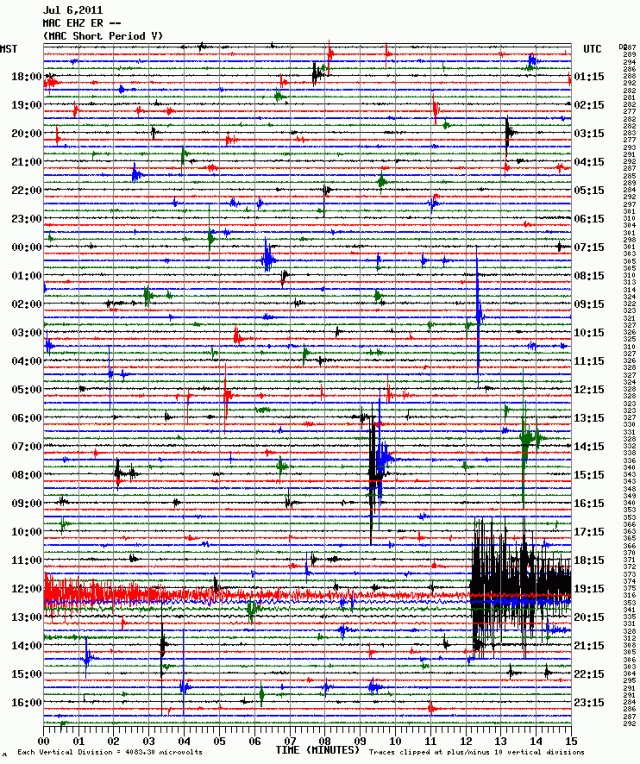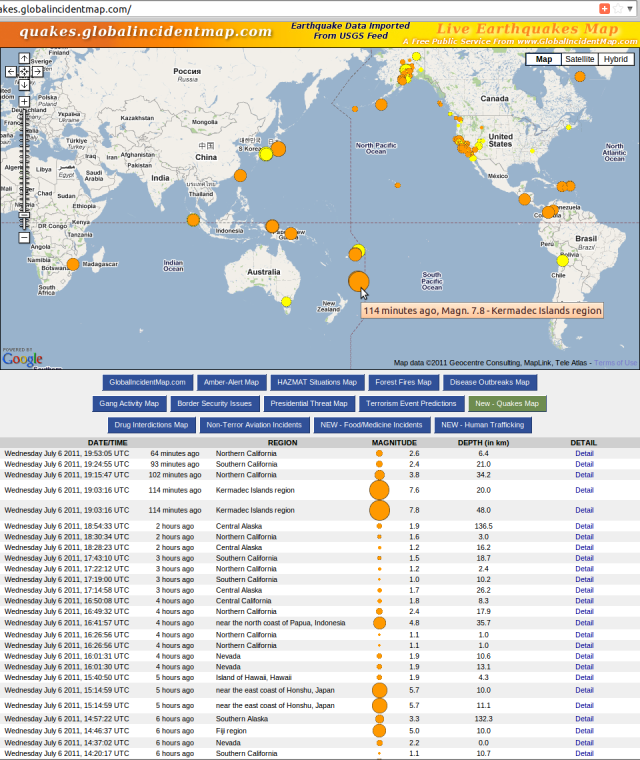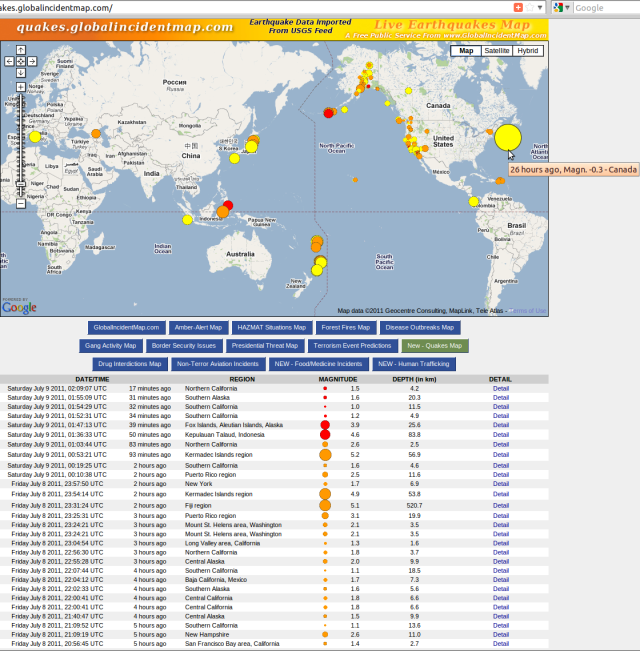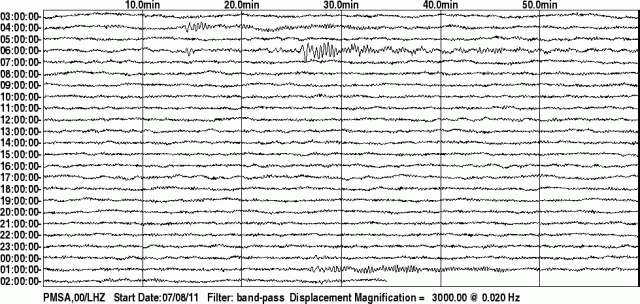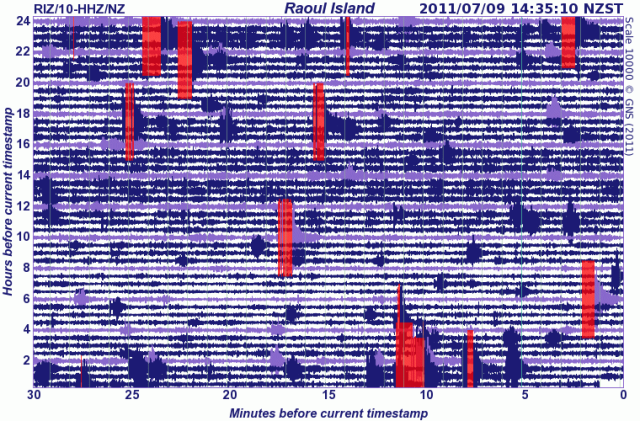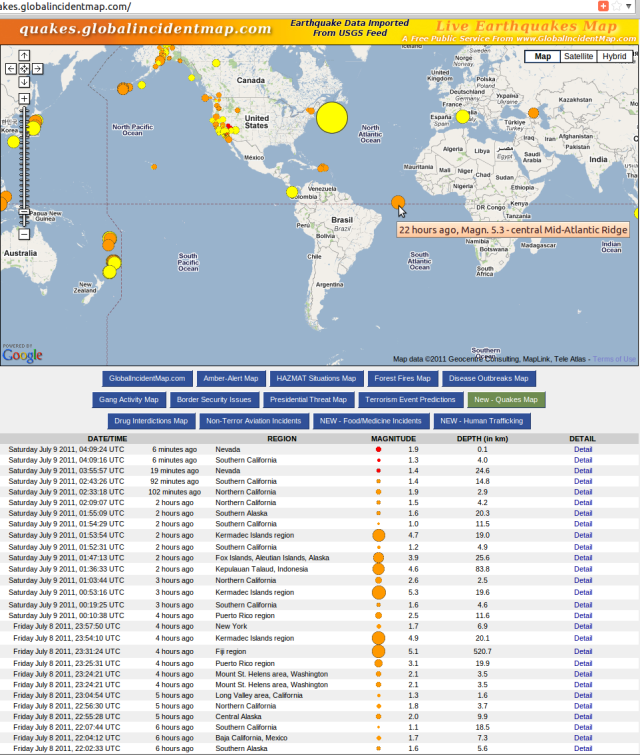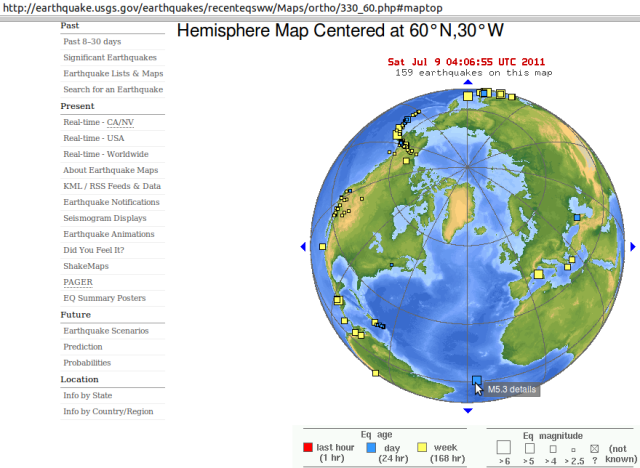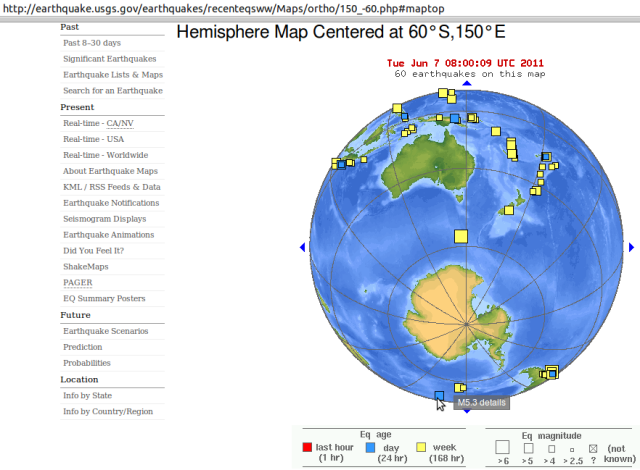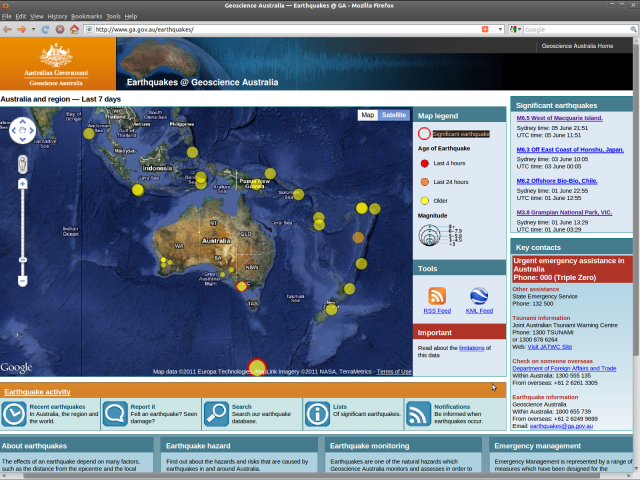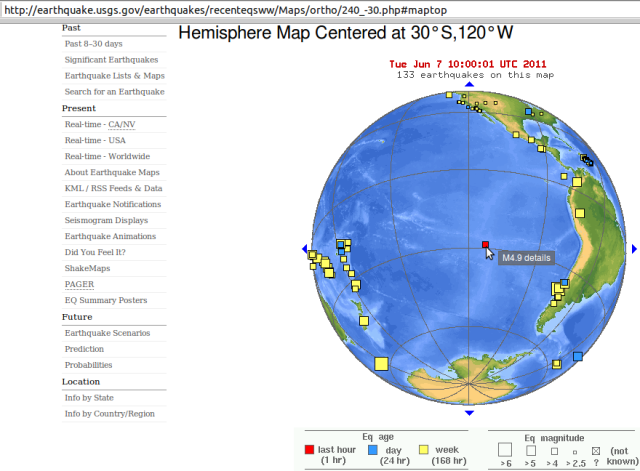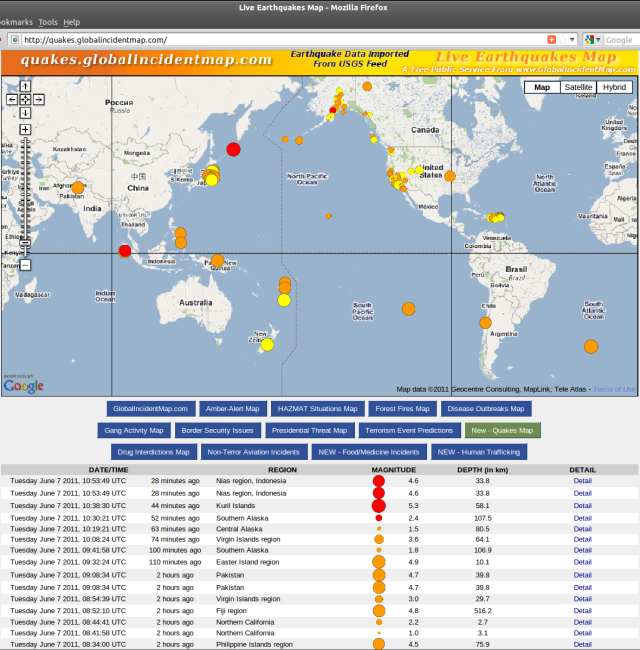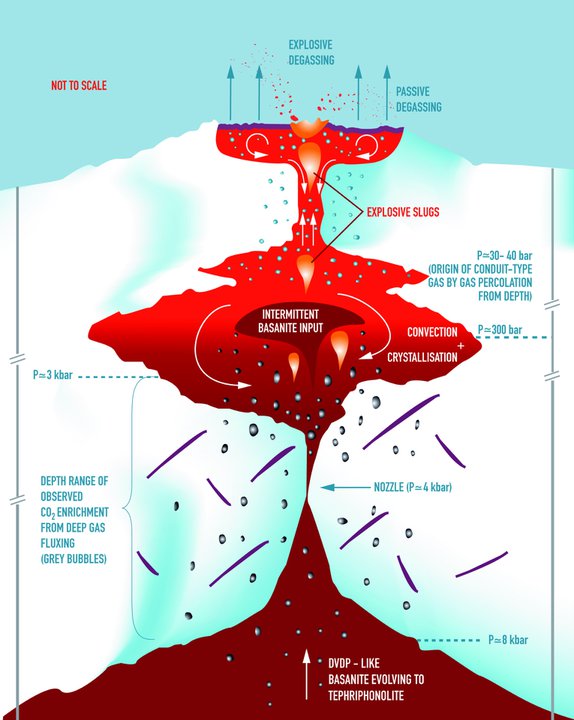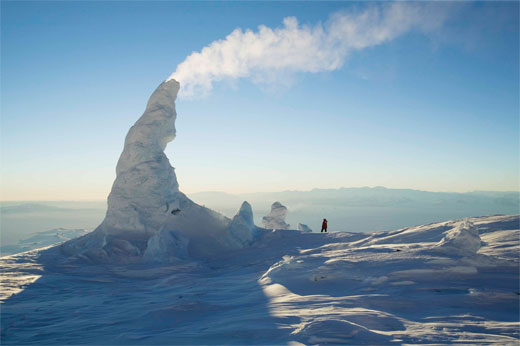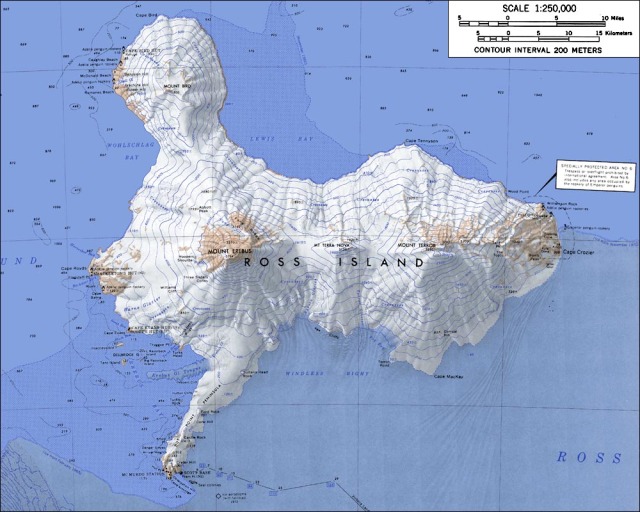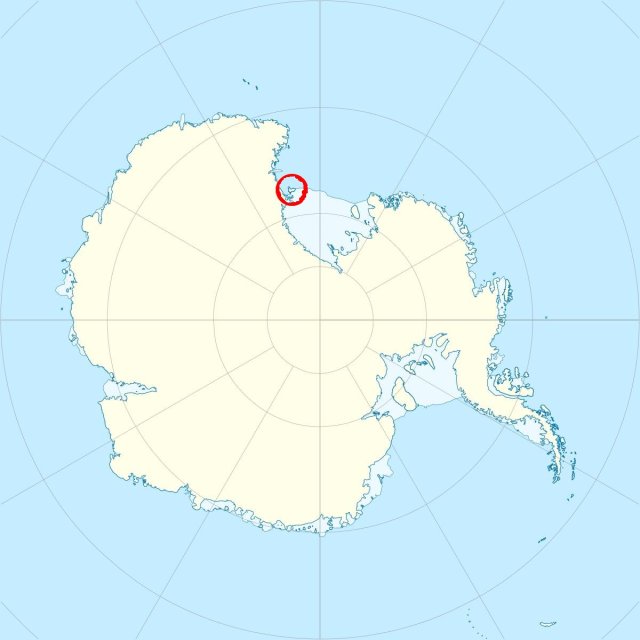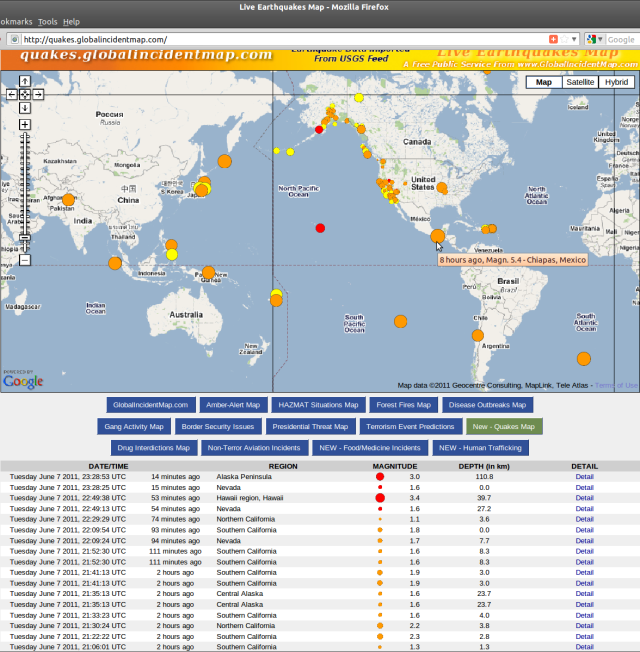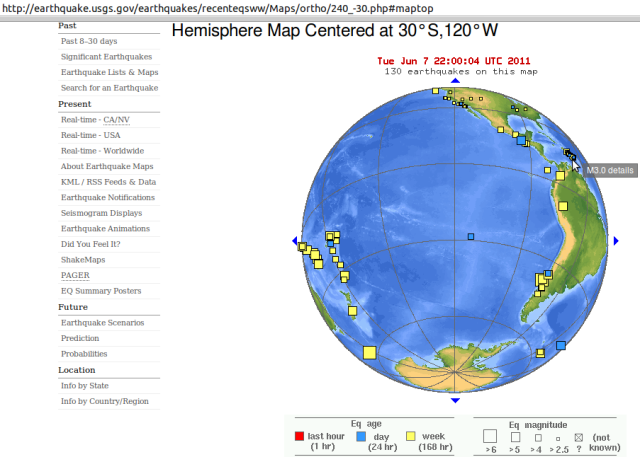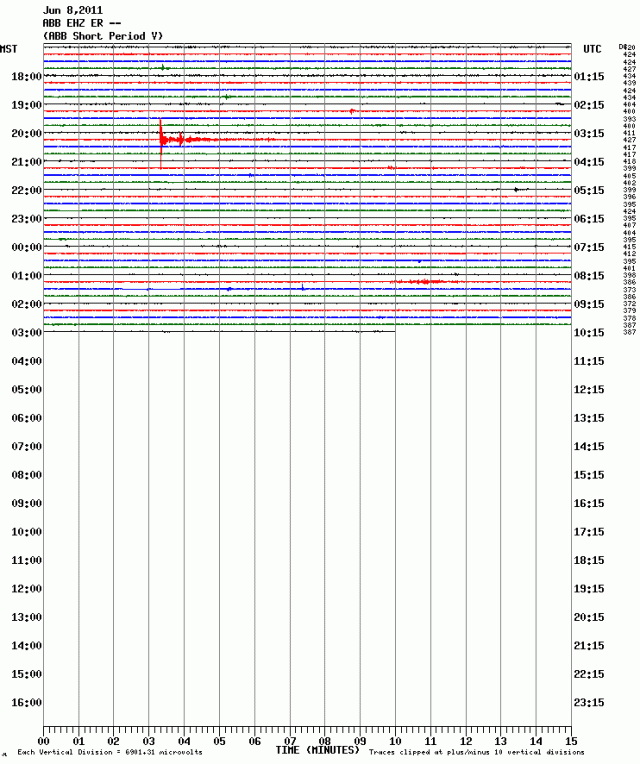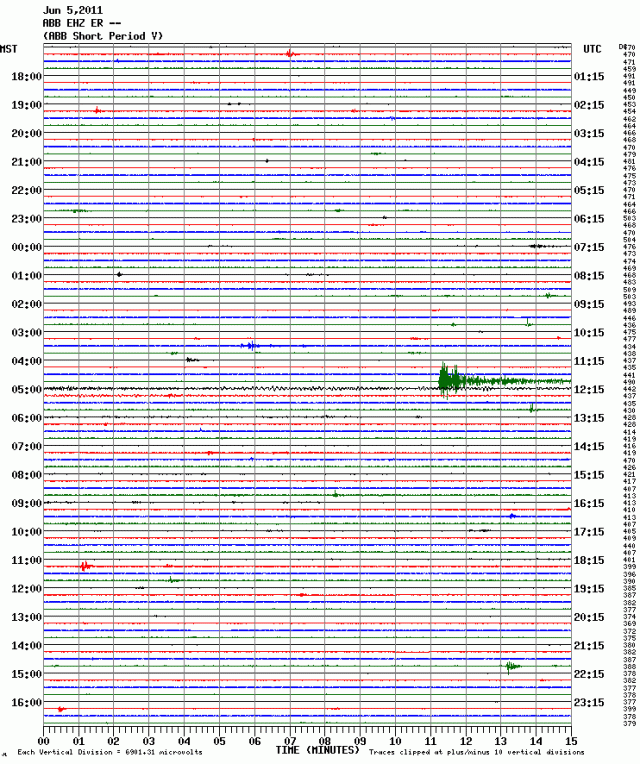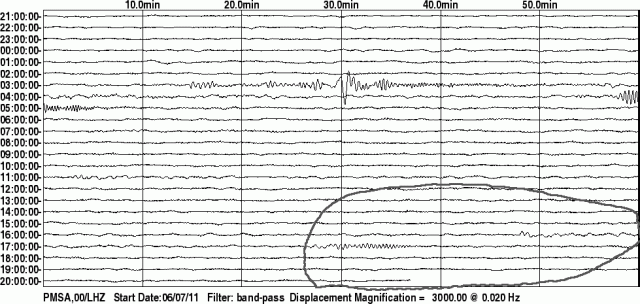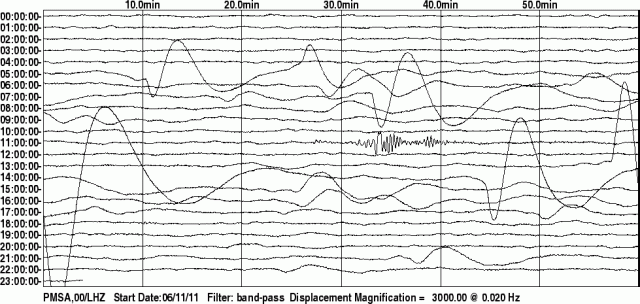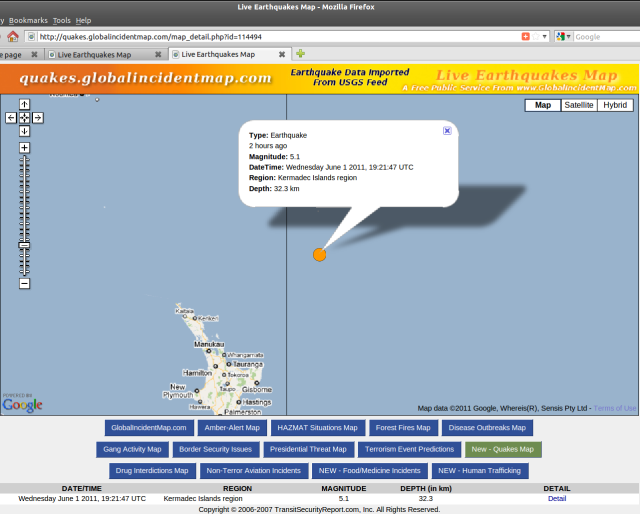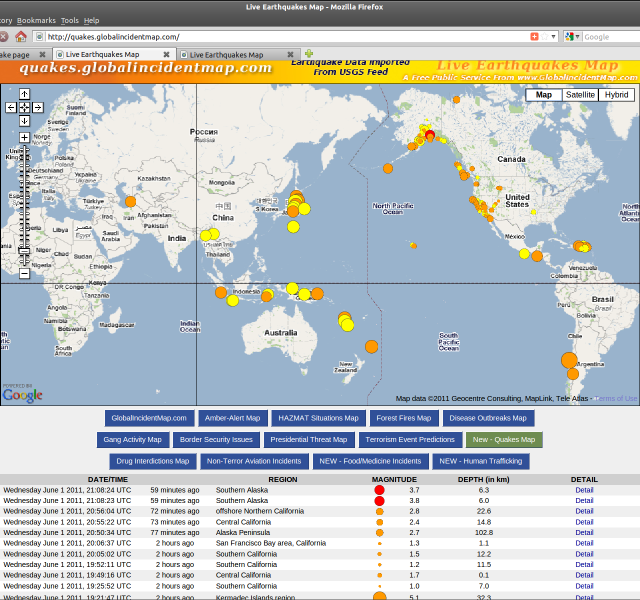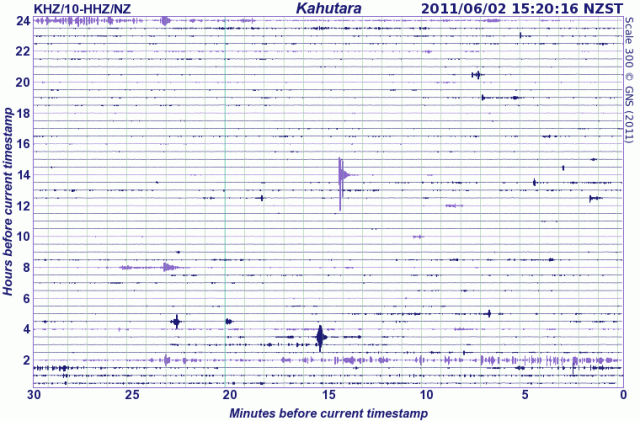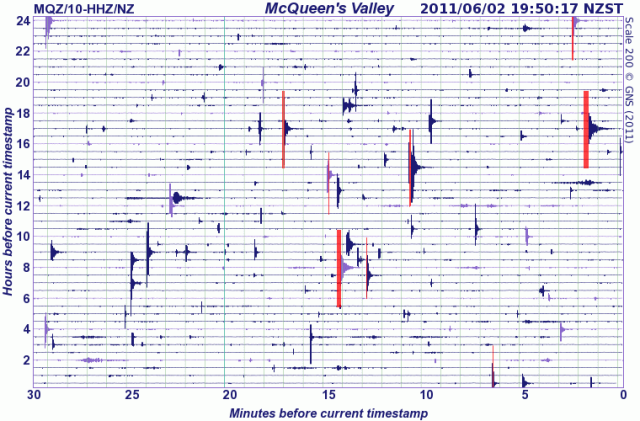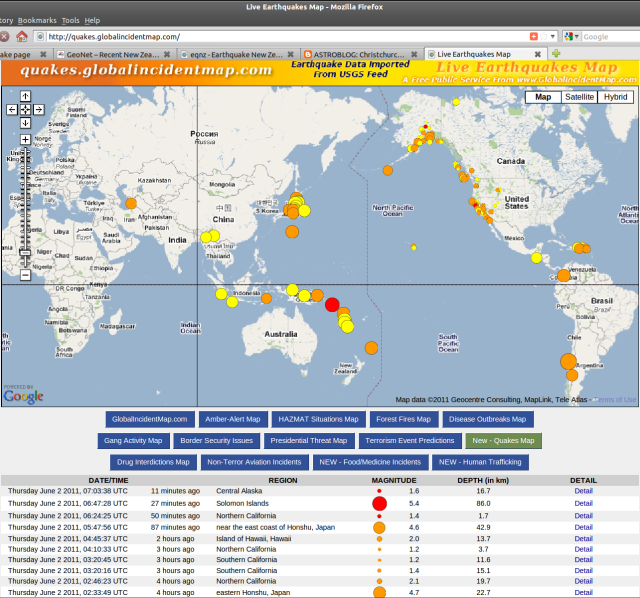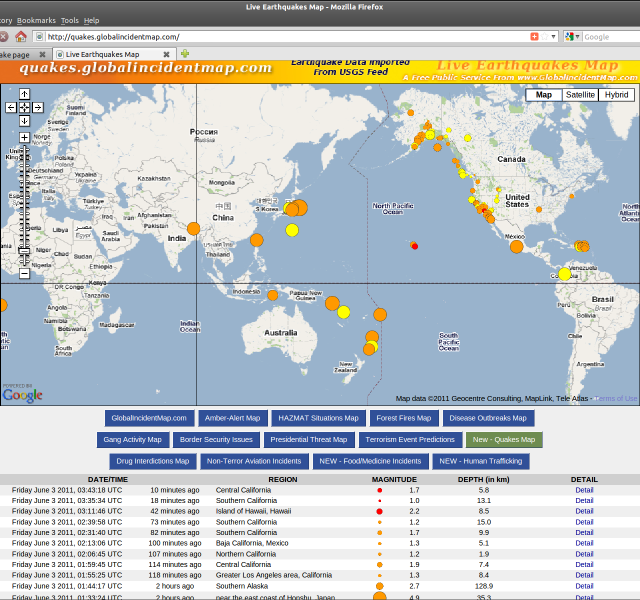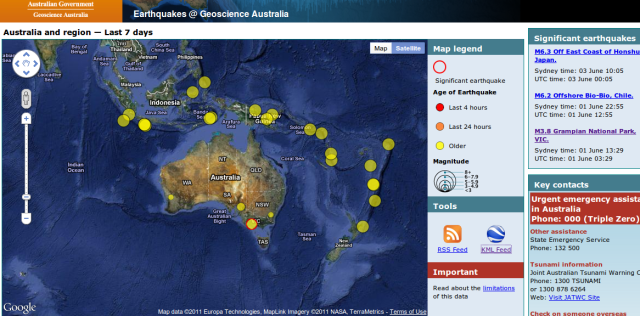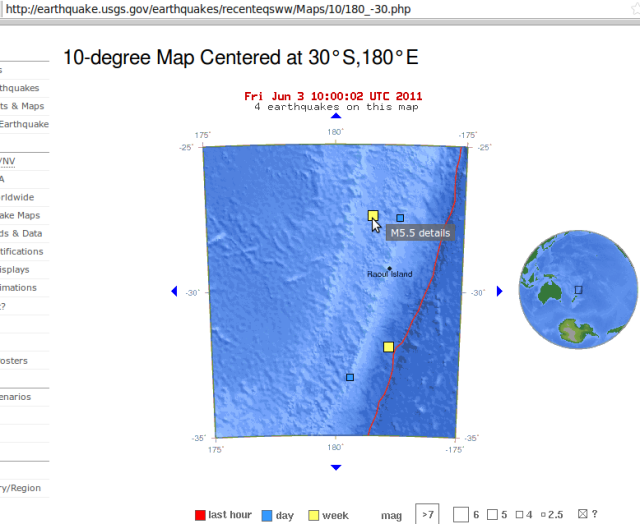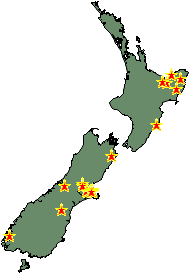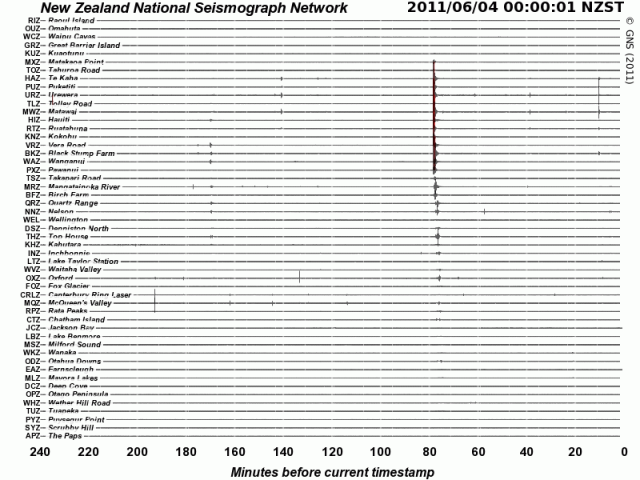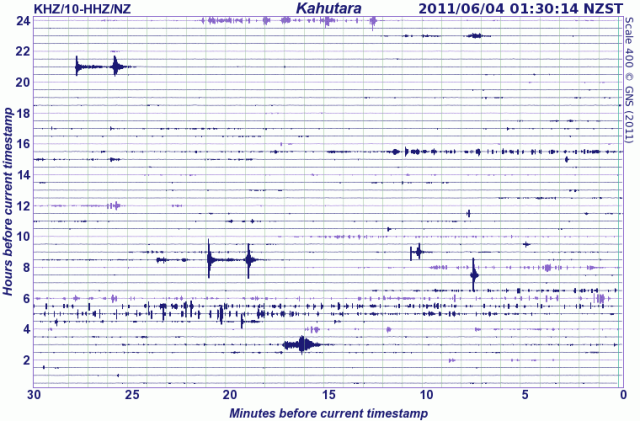Tidal marine hazard warning for north-east New Zealand coast – Reinga to East Cape – Stay out of the water and off the beach-line. Be Prepared for stronger than usual currents. Act with caution if boating. 7.03am Kermadec Islands magnitude 7.6 earthquake – moderate sea effect – see GeoNet record. Ref. New Zealand Ministry of Civil Defence and Emergency Management MCDEM.
See today’s USGS record and the Poster of the Kermadec-Tonga Trench Earthquake of 09 December 2007 – Magnitude 7.8.
At 5:26 pm 2011/07/06 Tsunami-Warn.com wrote to me for an exchange of web-links, which I am very happy to transact. At the time it was not clear which page I should post this Auckland company link onto. Now it stands as 13.4 hours’ early warning for today’s 7:03am, near-local seismic event. Check out the impressive Tsunami-Warn service, a “global early warning and alert system [by] SMS text message” – read latest notice.
This momentary alarm follows recent escalation of Fiji area 5+ quakes, that was already amidst a period of heightened seismic activity on the north and east Australian Plate. New Zealand geology is ultimately affected by this type of movement, as I began warning eleven days ago: 5.7 south-west Tonga Trench ridge quake shakes NZ. Then two days ago, it was already looking like a ‘more noticable’ /serious? seismic brewing, which GNS Science advise us not to see: Taupo 6.5 quake not good news 4 ChristChurch or NZ. Three days ago, I showed precisely where to watch for any imminent local bad shakes again: Next ChristChurch 6+ quake (which is not starting to trend below the critical ten gigajoule daily Quake Energy release line again yet)
On Cashmere hill, the first high-frequency vibration burst came through from the Kermadecs at 7:45am.
More community discussion: Tamzin Kay South Pacific Quake & Tsunami July 7 2011 for AstroBlog.
N.B. fellow Kiwis – today’s Magnitude 4.8 – KERMADEC ISLANDS REGION 2011 July 06 21:25:04 UTC 9:25am aftershock does not even make it onto GeoNet’s radar! Nor this, a Raoull Island seismograph screenshot, taken 2 July and perhaps showing a clear foreshock to the 7.6 main shock, that had otherwise escaped all the published seismic records (and forecasting):
But here is the double shocker, the effect of the Kermadec magnitude 7.6 quake upon the other side of Antarctica, south of Cape Horn – Palmer Station:
And what is the extra trace movement you can see here got going early, ahead of the large one. about 4:25am NZST for almost an hour, that has no obvious other global seismic record?
Then a newer shot, capturing also the Kermadec 6.0 aftershock to the 7.6:
Let this be our triple alert, the effect of the Kermadec magnitude 7.6 quake upon Mount Erebus, NZ Ross Dependency, Antarctica:
Significant aftershocks ~ THE EARTH IS STILL MOVING on the Kermadec Trench …
I tend to believe this duplicate Kermadec 7.6 depth record, starting this full event account that shows very strong link to west-coast California and Alaska USA (as figured two weeks ago), from the Live Earthquakes Map (magnitude + depth; newest at top):
(series is ever-continued… New data archive page follows on: Kermadec collision cont’d 11/07/11)
Saturday July 9 2011, 01:53:54 UTC Kermadec Islands region 4.7 19.0
Saturday July 9 2011, 00:53:21 UTC Kermadec Islands region 5.2 56.9
Friday July 8 2011, 23:54:14 UTC Kermadec Islands region 4.9 53.8
Friday July 8 2011, 23:31:24 UTC Fiji region 5.1 520.7
Friday July 8 2011, 20:54:06 UTC Fiji region 4.7 577.1
Friday July 8 2011, 16:47:22 UTC Kermadec Islands region 4.8 46.4
Friday July 8 2011, 05:53:03 UTC central Mid-Atlantic Ridge 5.3 10.0
Friday July 8 2011, 05:12:07 UTC Kermadec Islands region 5.2 20.1
Friday July 8 2011, 04:49:22 UTC Fiji region 4.6 628.9
Friday July 8 2011, 03:40:24 UTC Kermadec Islands region 5.3 22.2
Thursday July 7 2011, 23:27:54 UTC Canada -0.3 178.0
Thursday July 7 2011, 23:27:15 UTC Kermadec Islands region 5.2 69.2
Thursday July 7 2011, 22:46:37 UTC Canada 3.1 76.0
Thursday July 7 2011, 21:03:34 UTC Kermadec Islands region 5.1 1.0
Thursday July 7 2011, 19:08:36 UTC Fiji region 5.6 561.3
Thursday July 7 2011, 18:38:23 UTC south of Panama 4.5 10.1
Thursday July 7 2011, 18:35:42 UTC eastern Honshu, Japan 5.6 45.0
Thursday July 7 2011, 14:53:53 UTC south of the Kermadec Islands 5.3 40.3
Thursday July 7 2011, 13:47:01 UTC south of the Kermadec Islands 5.0 29.4
Thursday July 7 2011, 13:07:23 UTC Kermadec Islands, New Zealand 5.3
(trimmed out from here up, retaining items of interest)
Thursday July 7 2011, 09:29:58 UTC Kermadec Islands region 5.5 22.0
Thursday July 7 2011, 09:10:52 UTC Kermadec Islands region 6.0 19.9
Thursday July 7 2011, 08:29:43 UTC Central California 2.1 2.5
Thursday July 7 2011, 08:17:30 UTC Central Alaska 1.5 84.4
Thursday July 7 2011, 08:00:54 UTC Southern California 1.1 14.1
Thursday July 7 2011, 07:46:08 UTC Central Alaska 1.2 0.9
Thursday July 7 2011, 07:20:09 UTC Central California 1.6 3.6
Thursday July 7 2011, 07:10:20 UTC Moro Gulf, Mindanao, Philippines 4.8 561.1
Thursday July 7 2011, 06:43:42 UTC Southern California 1.0 16.3
Thursday July 7 2011, 06:36:21 UTC Southern Alaska 2.6 91.8
Thursday July 7 2011, 06:05:21 UTC Kermadec Islands region 4.7 19.6
Thursday July 7 2011, 05:10:08 UTC near the east coast of Honshu, Japan 4.9 30.4
Thursday July 7 2011, 05:03:55 UTC Southern California 2.0 14.5
Thursday July 7 2011, 05:03:55 UTC Southern California 2.0 14.5
Thursday July 7 2011, 04:40:17 UTC Kermadec Islands region 5.5 19.4
Thursday July 7 2011, 04:38:54 UTC Southern Alaska 1.9 37.0
Thursday July 7 2011, 04:20:03 UTC Kermadec Islands region 4.8 20.0
Thursday July 7 2011, 04:16:37 UTC Southern Alaska 1.7 3.1
Thursday July 7 2011, 04:12:08 UTC Central Alaska 1.9 59.7
Thursday July 7 2011, 04:02:05 UTC near the east coast of Honshu, Japan 4.9 33.9
Thursday July 7 2011, 03:49:18 UTC Washington 1.8 17.7
Thursday July 7 2011, 03:41:39 UTC Kermadec Islands region 4.9 20.0
Thursday July 7 2011, 03:20:16 UTC Central Alaska 2.0 7.3
Thursday July 7 2011, 03:20:16 UTC Central Alaska 2.0 7.3
Thursday July 7 2011, 02:12:24 UTC Virgin Islands region 2.9 36.1
Thursday July 7 2011, 02:10:21 UTC Kermadec Islands region 5.0 19.5
Thursday July 7 2011, 01:26:38 UTC Kermadec Islands region 5.1 19.7
Thursday July 7 2011, 01:23:05 UTC northern Alaska 1.2 11.6
Thursday July 7 2011, 01:16:00 UTC Kermadec Islands region 4.8 20.4
Thursday July 7 2011, 01:06:35 UTC Nevada 2.0 0.0
Thursday July 7 2011, 00:33:37 UTC Kermadec Islands region 5.2 26.4
Thursday July 7 2011, 00:26:44 UTC Southern Alaska 3.1 131.4
Wednesday July 6 2011, 23:13:35 UTC Central California 1.4 10.3
Wednesday July 6 2011, 23:03:32 UTC Kermadec Islands region 4.9 25.0
Wednesday July 6 2011, 22:52:25 UTC Alaska Peninsula 2.2 2.8
Wednesday July 6 2011, 22:50:24 UTC Southern California 1.4 18.8
Wednesday July 6 2011, 22:50:05 UTC Kenai Peninsula, Alaska 1.7 40.7
Wednesday July 6 2011, 22:31:27 UTC Kermadec Islands region 4.9 27.6
Wednesday July 6 2011, 21:49:08 UTC Central Alaska 2.0 74.7
Wednesday July 6 2011, 21:36:37 UTC Southern Alaska 2.1 6.6
Wednesday July 6 2011, 21:28:06 UTC Northern California 1.2 2.4
Wednesday July 6 2011, 21:26:13 UTC Northern California 2.0 2.0
Wednesday July 6 2011, 21:25:04 UTC Kermadec Islands region 4.8 18.9
Wednesday July 6 2011, 21:07:08 UTC Central California 2.0 7.2
Wednesday July 6 2011, 21:04:03 UTC Kermadec Islands region 5.3 16.8
Wednesday July 6 2011, 20:35:39 UTC Kermadec Islands region 5.6 10.0
Wednesday July 6 2011, 19:53:05 UTC Northern California 2.6 1.8
Wednesday July 6 2011, 19:24:55 UTC Southern California 2.4 21.0
Wednesday July 6 2011, 19:15:47 UTC Northern California 3.8 34.2
Wednesday July 6 2011, 19:03:16 UTC Kermadec Islands region 7.6 20.0
Wednesday July 6 2011, 19:03:16 UTC Kermadec Islands region 7.8 48.0
Palmer Station Antarctica, below Cape Horn, shaking from two sides and ringing like a bell now – Pacific Kermadec 5.3, Mid-Atlantic Ridge 5.3, Kermadec 5.2:
Raoul Island / Kermadec Trench still very unsettled two days after magnitude 7.6 quake:
NOTE
Iceland volcano: eruption ‘could just be rehearsal’ for worse ash chaos if Katla blows “the magna chambers of a volcano that has some 10 times the power of Eyjafjallajökull are long ‘overdue’ an eruption after an unprecedented 92 years of inactivity..” telegraph.co.uk Saturday 09 July 2011.
…bringing Atlantic events into focus, centred on Palmer Station Antarctica at base here:

